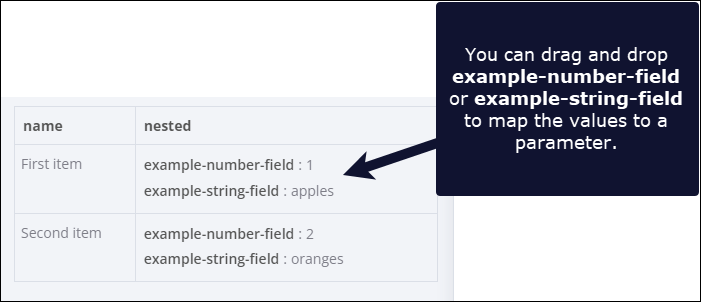Mapping in the UI#
Data mapping means referencing data from previous nodes. It doesn't include changing (transforming) data, just referencing it.
You can map data in the following ways:
- Using the expressions editor.
- By dragging and dropping data from the INPUT table or JSON into parameters. This generates the expression for you.
How to drag and drop data#
- Run your workflow to load data.
- Open the node where you need to map data.
- You can map in both table and JSON view:
- In table view: click and hold a table heading to map top level data, or a field in the table to map nested data.
- In JSON view: click and hold an attribute.
- Drag the item into the parameter field where you want to use the data.
Understand nested data#
Given the following data:
1 2 3 4 5 6 7 8 9 10 11 12 13 14 15 16 | |
n8n displays it in table form like this:

Map data in the expressions editor#
These examples show how to access linked items in the expressions editor. Refer to expressions for more information on expressions, including built in variables and methods.
Access the linked item in a previous node's output#
When you use this, n8n works back up the item linking chain, to find the parent item in the given node.
1 2 | |
As a longer example, consider a scenario where a node earlier in the workflow has the following output data:
1 2 3 4 5 6 7 8 9 10 11 12 13 14 15 16 17 18 19 20 21 22 | |
To extract the name, use the following expression:
1 | |
Access the linked item in the current node's input#
In this case, the item linking is within the node: find the input item that the node links to an output item.
1 2 | |
As a longer example, consider a scenario where the current node has the following input data:
1 2 3 4 5 6 7 8 9 10 11 12 13 14 15 16 17 18 19 20 21 22 | |
To extract the name, you'd normally use drag-and-drop Data mapping, but you could also write the following expression:
1 | |